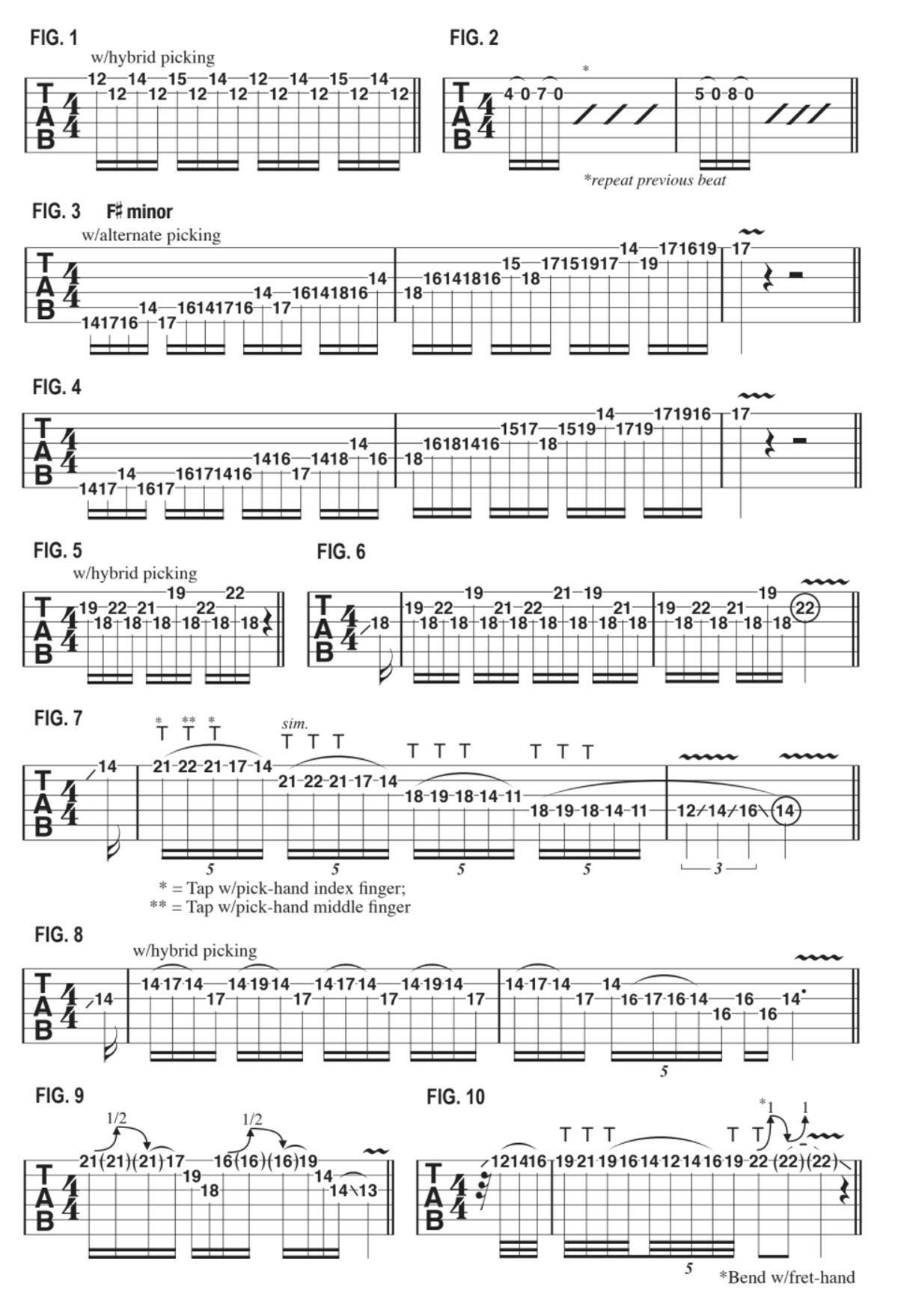Joel Hoekstra teaches you the guitar solo for Whitesnake's Always and Forever
With hybrid picking and two-finger tapping, this one'll certainly test your chops
Of all the solos I crafted and recorded for the latest Whitesnake album, 2019's Flesh & Blood, the one in the song Always and Forever is among the most aggressive and features a variety of my favorite lead playing techniques, including two-finger tapping.
For today’s lesson, I’d like to use that solo as a case study in applying that and other cool and useful techniques.
The solo is played in the key of F# minor, and the majority of the phrases are based either on the F# blues scale (F#, A, B, C, C#, E) or the F# natural minor scale, which is also known as the F# pure minor scale and the F# Aeolian mode (F#, G#, A, B, C#, D, E).
I begin the solo with a pedal-tone lick; a pedal-tone can be defined as a sustained or re-articulated note around which other notes or chords move. Figure 1 offers a clear example of this type of pedal tone lick, wherein an ascending melody on the high E string alternates in 16th notes with a B note played on the 2nd string’s 12th fret.
- Joel Hoekstra teaches you how to play the intro and opening solo to Whitesnake's Shut Up and Kiss Me
- Whitesnake's Joel Hoekstra: how to solo over a ballad
Another great example of this type of pedal-tone lick is the pull-off pattern shown in Figure 2. Here, the open B string is sounded with pull-offs from higher, fretted melody tones.
The opening phrase in the solo to Always and Forever is based on a series of diatonic 3rd intervals, or 3rds, played within the structure of F# Aeolian. Figure 3 illustrates how to ascend in diatonic 3rds within the scale structure.
A sax player friend of mine suggested reversing the direction of every other pair of 3rds, so that the sequence would sound less obvious and have a more interesting melodic contour, and the result is the phrase shown in Figure 4.
All the latest guitar news, interviews, lessons, reviews, deals and more, direct to your inbox!
When it came to this solo, I decided to incorporate this reverse order idea into the opening pedal-tone-driven phrase. Instead of playing Figure 5, wherein each 3rd moves from the lower to the higher string, I alternately reverse the direction of the note pairs, as shown in Figure 6.
The next phrase in the solo brings in two-finger fretboard tapping, for which I use my pick hand’s first two fingers, followed by two notes played with the fret hand. The result is the series of cascading quintuplets shown in Figure 7.
I then steer the feel of the solo back into more standard hard rock territory by playing a series of bluesy hammer/pull licks that are based on the F# blues scale, as shown in Figure 8.
After that, I revisit neo-classical territory with the minor arpeggio-based phrases shown in Figure 9. The first is simply based on a F#m triad, with the notes C#, A and F#, and the second (beginning with the second half-step bend) outlines a more harmonically rich F# m(add)9 sound, with the notes G#, F#, C# and A.
I then wrap up the solo with the fast double-tapped phrase on the high E string shown in Figure 10, again using two pick-hand fingers.

